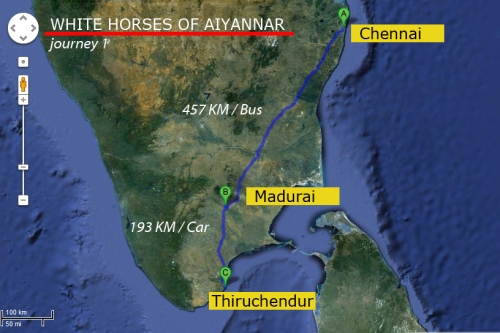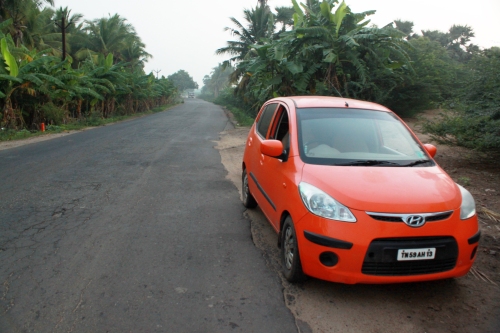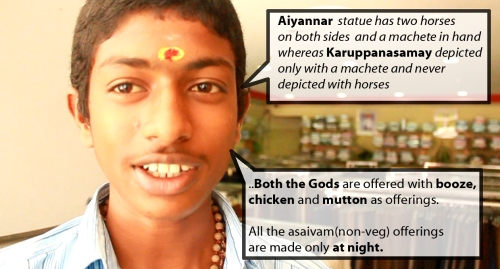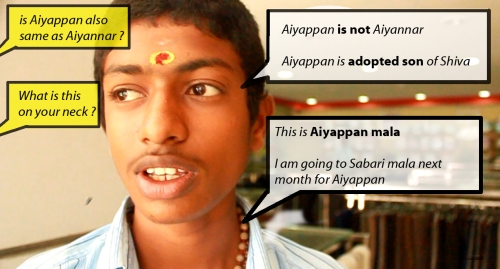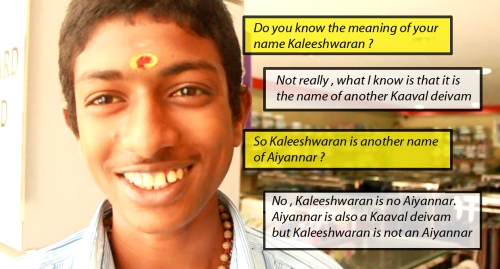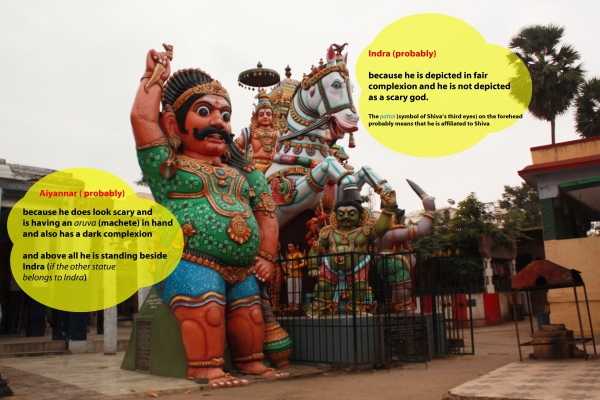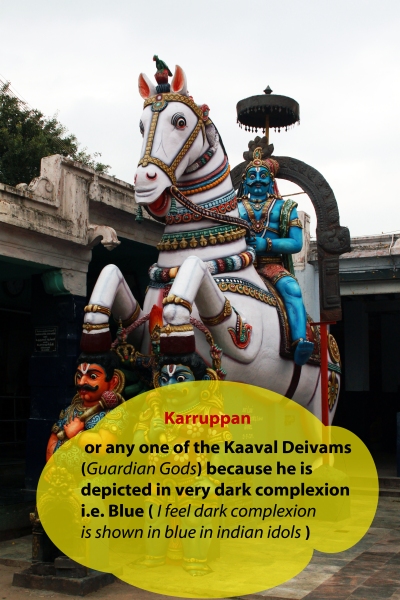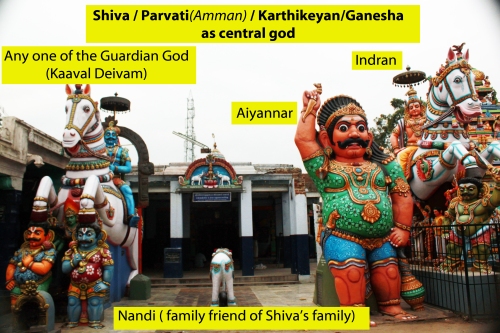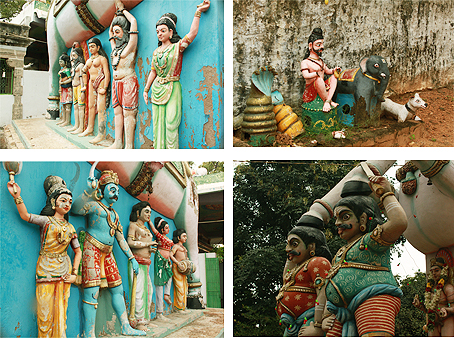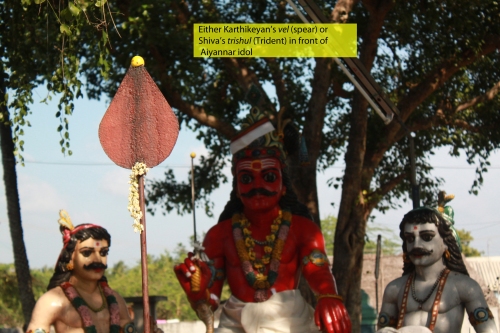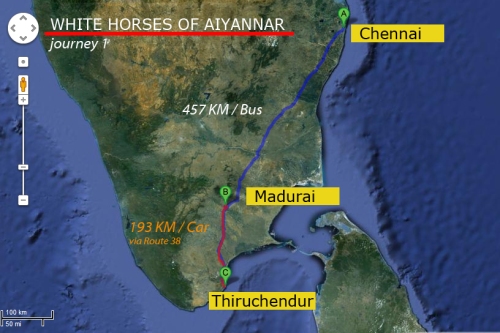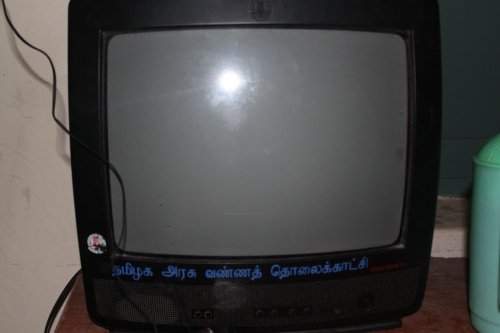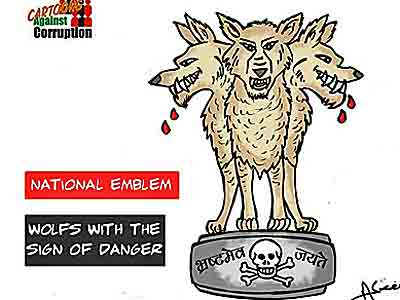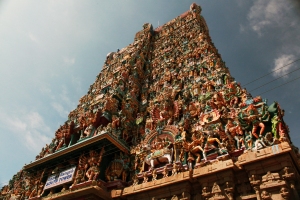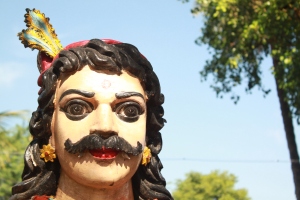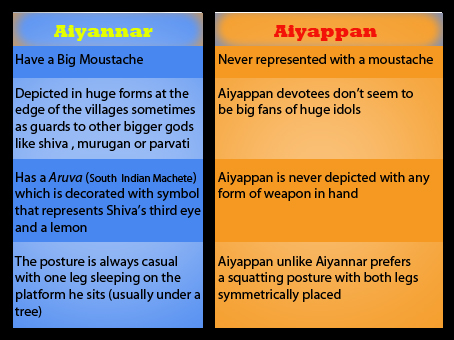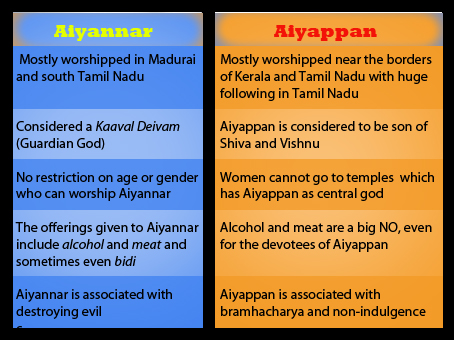Secondary research continues: As I said in my previous post, comparing Aiyannar and Aiyappan is not the goal of this project but it does serve one very important purpose in the project.A comparitive description helps to describe better.I was talking about a story which I read on internet before I left for the journey.The illustrations below explains the story.
<Coming soon>
So there seems to be different stories associated with Aiyannar in every search result on google.The first documentary(below) on Aiyannar seems to be the only decent documentary available on youtube.com whereas all the others videos are made by the temple trust itself and hence is more of an marketing video for devotees of the temple.Even this documentary is about the Temple at Taiping and not exactly about the Aiyannar himself.
The other videos like this one, were mostly by the temple trust themselves and hence lacked the “external point of view”:
More the density of Aiyannar Temples,better the hunting spot for the legend: I learnt that Aiyannar temples are mostly found (densely spotted) in the south of Tamil Nadu specially around the Madurai region.Hence I planned a trip from Madurai to Thiruchendur.Thiruchendur was an arbitrary location seleccted to end the journey.
Journey into the mindscape : I would not say that I had a fixed plan which temples to visit and whom to meet because most of the friends whom I knew were like any modern Chennaites who are planning to get their “green card” ready by their retirements.Further the generation before me (my dad-mom) also seem to be unaware of the way of life that was in Tamil villages before independence.Modernity seemed to have arrived immediately after the independence to the villages in Tamil Nadu(thanks to able governments in the 60s and 70s which is considered to be golden period of development in the history of Tamil Nadu) and blurred the sharp impact legends and myths used to have over the minds of people.So my journey is going to be tough because I might find artifacts scattered across the state but digging the legend from the people’s unconscious that is buried under the modernity.
Allah with me in the project : I took the car along with the driver from my uncle’s college buddy, Abdullah, who is a textile businessman in Madurai having an Allen Solly showroom.I started the interview from his showroom itself.
Journey of 1000 miles starts with a step : My first interviewee was Kaleeshwaran, a boy working at Abdullah’s textile shop.I started the discussion with what you know about Aiyannar.The boy was shy and reluctant to open his mouth saying he hardly knows anything.Then he said that Aiyannar gods are “Guardian Gods” (Kaaval Deivams) who guard the villages.There are many Aiyannar names and all of them refer to one god.They are also called “Kula Deivams” (meaning guardians of the clans).In the same temple where there is Aiyannar there is also another god who can also be Kula Deivam for some families.He is called Karuppanasamy.
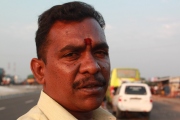 The Journey Begins Then we started off to a 200 KM journey.We stopped at every Ayyannar temple that was coming on the way and clicked pictures but could hardly get any interviews because the priests were repelled by two reasons:
The Journey Begins Then we started off to a 200 KM journey.We stopped at every Ayyannar temple that was coming on the way and clicked pictures but could hardly get any interviews because the priests were repelled by two reasons:
(a) My driver Pandeeshwaran introducing me to the priests as a researcher from IIT doing a project on Aiyannars
(b) Me holding a huge DSLR camera while my driver is introducing me
It was really awkward that most of the priests didn’t like to be interviewed by some photographer with long uncombed hair and studs in the ears.The way my driver was introducing me to the priests , I probably looked like a pampered child who doesn’t know what to do with his life.At some places I tried taking photographs first and if somebody stops me to do so I can apologize and ask few questions about Aiyannar and get some information.I did not know the art of interviewing until I worked with some three hard-core ethnographers in action in Arunachal Pradesh with whom I joined as an assistant or rather apprentice. During this journey I still had to know that people do open up into a candid interview only after few icebreaking questions.And even for icebreaking there is no fixed methodology.Me being from engineering background I was totally unaware of talking to people , though I was able to develop a good rapport and all, I always failed to make them talk candidly specially people from the rural.This was a skill which I lacked and sometimes envied whenever I saw people who had that.My classmate Deepak Singh had this amazing skill of getting along with any kind of people easily.
A visible pattern about the temple complex : Some temples didn’t have any priests at all so I was able to click pictures freely.I started guessing which statue is which while clicking the pictures.After 5-6 temples I started realising there seems to be a pattern in the placement of the statues in the temple complex.There always seems to be one central god who seems to be from the Shiva’s family.The central god would be any one form of parvati or Ganesha or Shiva himself (but rarely) or Karthikeyan.But mostly it was the lady of the Shiva’s family whom the Aiyannar seemed to be guarding who is locally regarded as Amman.
I also found idols of the following in most of the complexes:
- sages,
- dogs ,
- naked women,
- shiva ling,
- five headed snakes
Not all temples like the one above in Madurai were rich in terms of grandness. Like any temple trust goes for a plain white gopuram to save money some of these Aiyannar temples also have reduced the number of idols to save money.Some temples didn’t have two horses and instead had only one horse statue with the Indran depicted.When I asked who is Aiyannar the priests showed the not-so-scary looking statue with the fair complexion.Like the texts which I read, these temples run by low budget trusts seem to be blurring the difference between Indra and Aiyannar and some between the Kaaval Deivams(Guardian gods) and Aiyannar but they never mixed the central god (Shiva/Parvati/Karthikeyan/Ganesha) to Aiyannar.This was very clear in this long unsuccessful trip.
Another major thing which I found in every temple even in the lonely statued temples of Aiyannar where there is no central god, there is some symbol that represents Aiyannar’s affiliation to Shiva’s family either in the form of the three-pronged-trident or Karthikeyan’s Spear(locally called as Vel)
A trip wasted: We were already returning back to Madurai and I had no solid interviews for the project.A lot of interviews were spoiled by my over enthusiastic driver.I was really upset by the way the journey has turned out because there were also other factors influencing this trip.My over protective uncle had asked my friend’s driver to return by the next day evening and hence the driver was always in a hurry and we could hardly stay at any temple for an interview.The driver was asking me so how was the trip and I said it was good but from inside I was really upset.I wanted to take one good interview in any one temple atleast.There was one temple left in Madurai which we didn’t visit beginning of the journey which was in the outskirts of Madurai.The place was called Avuniyapuram and the temple was known as Avuniyapuram Aiyannar Koyil.I asked my driver to stop near the temple and and asked the driver not to interfere my interview.I went to the priest and asked a few questions.The priest was surprisingly very helpful and seeing the camera in my hand asked me to click pictures if I wanted to.Then I said if I could offer something to the temple as offering.He said “any one can”. I gave him Rs. 300/- and asked to do archana(pooja) to Aiyannar with pongal the next day.The priest asked me to come the next morning 9 AM for the pooja.It was already 7 in the evening and the driver also seemed to be in a hurry to return the car to his owner.I decided to stay in Madurai for one more day to record the pooja which I sponsored.
I found a guest house to stay for the night which was right in front of the grand Madurai Meenakshi temple in Madurai.I tried changing some channels on the poor Television set in the room then retired to sleep.
Click here to read further in the project

